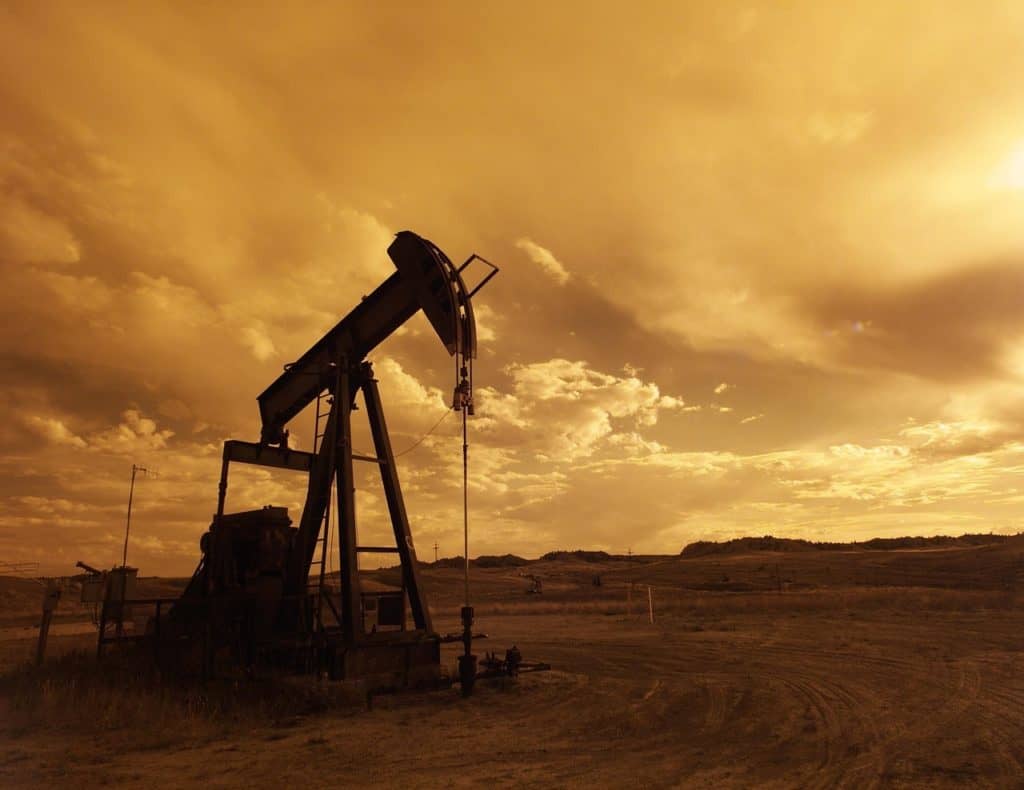When purchasing land, it’s important to know which rights come with the property.
There are two types of rights to be aware of: mineral and surface.
Surface rights are exactly like they sound – they are your rights to own and use the surface of the land. Depending on what type of property you own, owning the surface rights means you can develop the land as you see fit or as it is zoned.
Mineral rights apply to anything that exists underneath the surface. This includes coal, natural gas, oil or any other commodity that can be mined. If you don’t own these rights, you have no say in what happens to these natural resources.
A Brief History Of Mineral Rights
Just because you own the surface rights to a property, doesn’t necessarily mean you own the mineral rights. The U.S. has what is called “split estates,” which means surface rights and mineral rights are two separate entities, and people can own and sell one or both of these rights together, or apart from each other.
The U.S. is different from other countries around the world, because individuals and corporations have the opportunity to own mineral rights, as opposed to these rights belonging strictly to the government. This began in the 19th century with homestead and development acts, along with the General Mining Law of 1872, as a way of encouraging settlers to move out west. The General Mining Law is still the rule that governs mineral rights today.
Energy-Rich Areas
 If you live in an area with a lot of energy sources, and you’re looking to invest in land and potentially mine those energy sources, it’s important to know whether the property you are purchasing includes the mineral rights with the sale.
If you live in an area with a lot of energy sources, and you’re looking to invest in land and potentially mine those energy sources, it’s important to know whether the property you are purchasing includes the mineral rights with the sale.
Of course, not every area is going to be rich with all types of minerals, but certain areas will have a plethora of one or the other.
Below is a list of minerals and where they exist in abundance.
- Oil — Alaska, California, Colorado, Louisiana, New Mexico, North Dakota, Oklahoma, Utah, Texas and Wyoming
- Natural gas — Appalachian Basin, Arkansas, Colorado, Louisiana, Montana, Nebraska, New York, North Dakota, Ohio, Oklahoma, Pennsylvania, South Dakota, Texas, West Virginia and Wyoming
- Coal — mainly found in the Midwest, the Appalachian region, the Gulf Coast region and the West
- Gold — Alaska and California
- Silver — Alaska, Arizona, California, Colorado, Idaho, Missouri, Montana, Nevada, New Hampshire, New Mexico, North Carolina, Oklahoma, Oregon, Pennsylvania, Texas, Utah, Virginia and Washington
- Copper — Arizona, Utah, New Mexico, Montana and Nevada
- Iron — Michigan, Minnesota and Utah
- Uranium — Alabama, Alaska, Arizona, California, Colorado, Florida, Idaho, Nebraska, Nevada, New Jersey, New Mexico, North Dakota, Oklahoma, Oregon, Pennsylvania, South Dakota, Texas, Utah, Virginia, Washington and Wyoming
How Can You Profit?
If you own the mineral rights to your land, you can either sell them or lease them to an interested party. Both options have their pros and cons, and you can make money by either collecting royalty interest or working interest. It will be up to you to decide which one you prefer.
 In either case, keep in mind that to maximize your mineral rights, whether you are leasing or selling them, you need to get them in front of a large number of potential buyers. Doing so will ensure you are getting the best deal. It’s a good idea to have a professional assist and advise you through this process.
In either case, keep in mind that to maximize your mineral rights, whether you are leasing or selling them, you need to get them in front of a large number of potential buyers. Doing so will ensure you are getting the best deal. It’s a good idea to have a professional assist and advise you through this process.
It’s also important to retain a lawyer throughout your investment to periodically review whether it makes sense to continue with the agreement. An agreement with the likes of Exxon Mobil can be nearly impossible, as a now 110-year old lease proves. I can’t overemphasize the importance of carefully considering the terms of your lease.
If You Don’t Own the Mineral Rights, How Can This Affect You/Your Land Investment?
Not owning the mineral rights to a parcel of land doesn’t mean your property is worthless. If someone else owns the mineral rights and they sell those rights to an individual or corporation, you can still make a profit as the surface rights owner. You have the rights of ingress and egress. These rights can vary from state to state, but you may be entitled to compensation from the company that comes onto your land to extract the minerals.
It is possible that your land may potentially be damaged by the mining operations, and as such, you are entitled to compensation for those damages. You may also be able to charge the company for entering and exiting your land. To find out exactly what your rights are as a surface rights owner, speak with a lawyer or someone who is familiar with mineral and surface rights in your area.
Do You Own The Mineral Rights?
(A special note from Seth)
If you plan to use, sell or lease the mineral rights to your property at any point in the future, you’ll need to determine whether you own them in the first place. Ideally, you should be doing this research BEFORE you purchase the property – because after the purchase, you are stuck with what you have.
 In some cases, this determination of ownership can be made while doing a title search, however in most cases, a specific Mineral Rights Search would be best. By looking through the historical land ownership records of a property, you can ascertain whether the mineral rights have ever been reserved or leased by one of the previous owners.
In some cases, this determination of ownership can be made while doing a title search, however in most cases, a specific Mineral Rights Search would be best. By looking through the historical land ownership records of a property, you can ascertain whether the mineral rights have ever been reserved or leased by one of the previous owners.
If you aren’t well-versed in the intricacies of doing a title or mineral rights search, it’s a good idea to enlist the help of a title company, independent abstractor, or even an oil and gas search company to conduct this research for you prior to closing on the purchase.
Once the historical deeds and land records have been gathered from the county office, a well-trained eye will need to review them to see how the mineral rights have been transferred through time.
The tricky thing about this is – in many cases, every deed in the chain of title will NOT include a statement about who currently owns the mineral rights. Unless it specifically states that the mineral rights have been excluded from the sale, they are generally assumed to be included with the transfer of the property from one owner to another.
To add another wrinkle to the process – even if a deed does state that the mineral rights are included with the sale, it may very well be incorrect.
If any ONE of the previous land owners (going back to the original land grant) held back the transfer of the property’s mineral rights, then it’s safe to assume those mineral rights are not being included with the transfer to you – regardless of what is stated on the most recent deed.
In order to be certain that the mineral rights are available to be transferred, the historical deeds and records need to be carefully reviewed and scrutinized to verify that these rights haven’t been detached from the surface rights during a prior conveyance.
If the mineral rights were withheld by one of the previous owners or transferred to a separate party at any point in the past, it will take more research to track down the current owner of these rights and find out whether they are still available to be sold separately.
Leasing Mineral Rights
In some states, one common alternative for conveying mineral rights is for a property owner to lease out the mineral rights to a third party (usually an exploration company).
Unfortunately, this method is not always as easy to track down. These types of leases generally remain in effect for as long as production takes place – so, a two-year lease can extend any range of years beyond that term if the minerals are still actively being excavated.
Furthermore, if the holder of the lease does not release or discharge the lease after expiration, the lease may very well remain on the record, and it can be difficult to verify if/when the lease has expired. If this is the case, the holder of the lease would need to be contacted and they should provide a discharge of the lease in order to confirm that the lease term is complete.
Legal Disclaimer: The information in this article should not be interpreted as legal advice. It’s important to recognize that reading through old land records and understanding the legalese that goes into property conveyances requires special attention to detail, and a working knowledge of how title transfers work (among other things). It can be a very confusing and overwhelming task to search line-by-line through dozens of documents dating decades or even centuries into the past – especially for someone with an untrained eye. To be absolutely sure of what rights you do or don’t own in a property, a local title agent, abstractor, oil and gas searcher and/or real estate attorney would be best equipped to help you review and verify this.
And while you’re thinking through this issue, another question to carefully consider is…
Do the mineral rights even matter in you purchasing decision?
Unless the subsurface is being accessed by drilling/fracking by a neighboring parcel (which could impact the surface use of the subject parcel), in the vast majority of cases, the surface of the land will be just as useful with the mineral rights as without them. If an owner has no intention of drilling or mining the land themselves, then the ownership of mineral rights may very well be immaterial to their decision.
Owning a piece of property in an energy-rich area does not automatically mean you own both the surface rights AND the mineral rights — though you potentially could. Luckily, whether you own one or both of these rights, there’s still a chance you can make a profit on the property.
